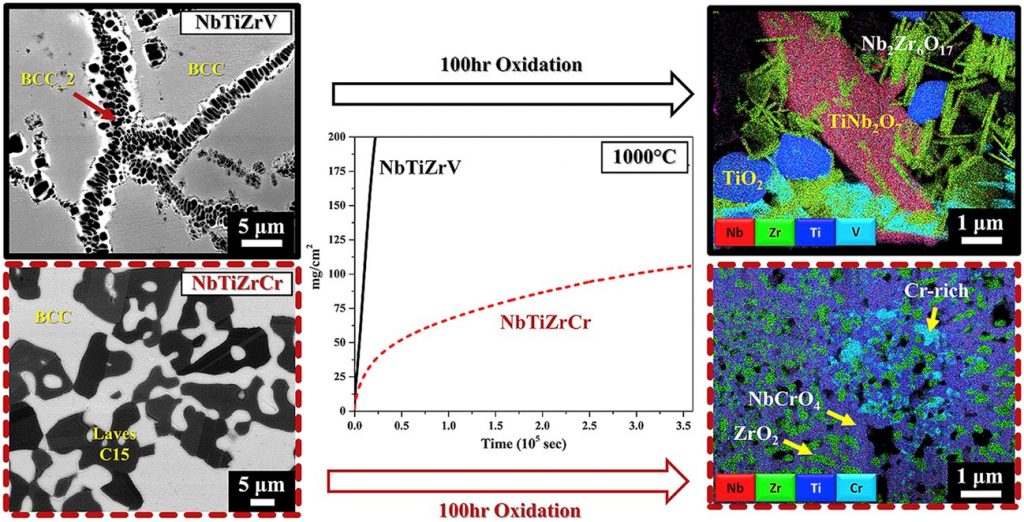Multi-Principal Element Alloys (MPEAs) are the subject of emerging interest due to their mechanical/thermal stability and strength at high temperature. A clear challenge is harnessing MPEA composition and microstructure to realize the potential oxidation and corrosion resistance. A unique aspect of MPEAs that has not been systematically explored is that MPEAs are thought to contain short-range order most simply as a variation in nearest neighbor configuration. This results in lattice distortions due to differences in atomic radii, as well as clustering effects, which are known to affect passivity in amorphous metallic glasses. Do variations in local structure give rise to non-uniform passivation and unpredictable corrosion behavior?
ADD SOME TEXT THROUGH CUSTOMIZER
ADD SOME TEXT THROUGH CUSTOMIZER
© Multidisciplinary University Research Initiative (MURI), Department of Materials Science & Engineering at Johns Hopkins. All Rights Reserved. | admin login
site by Pendari 





